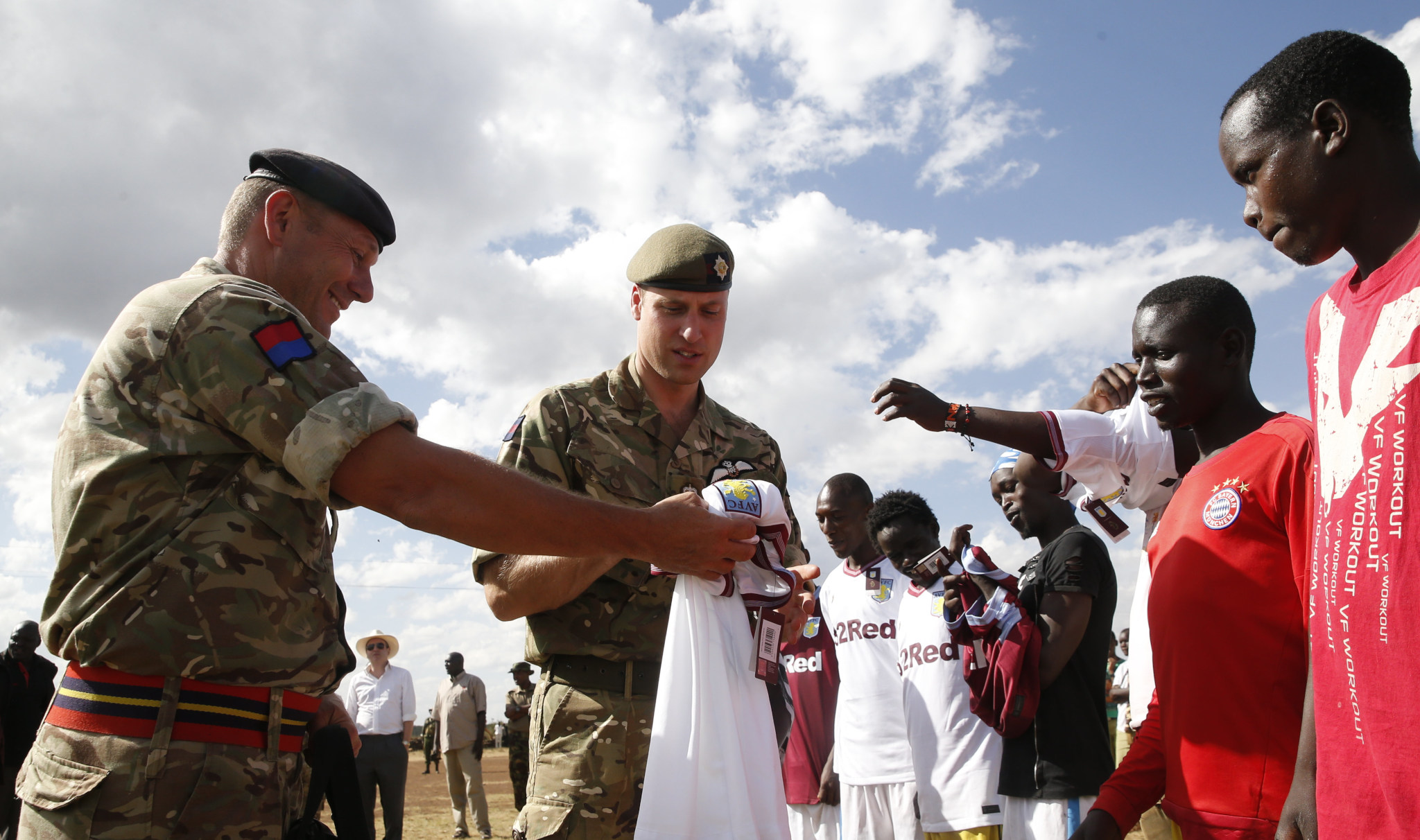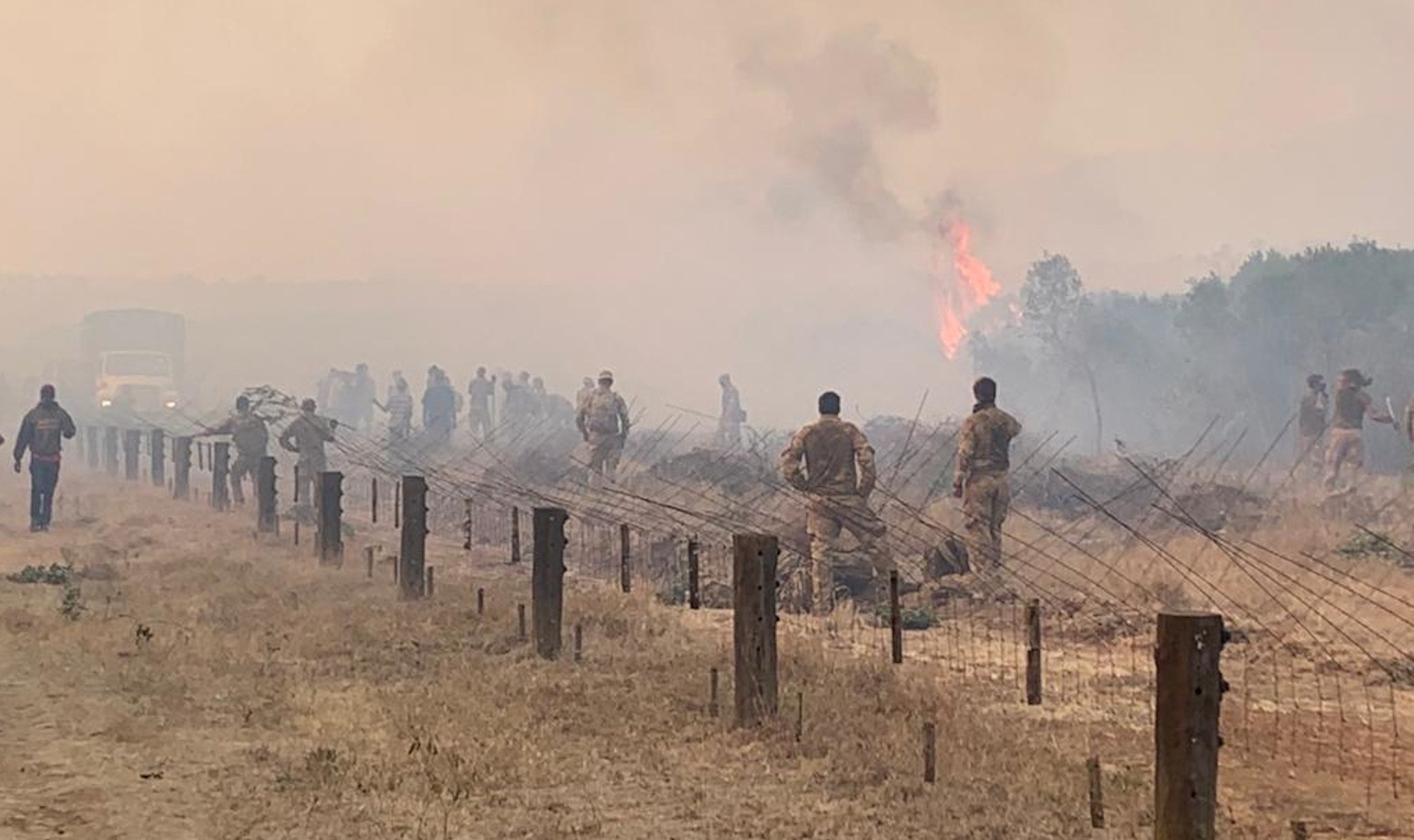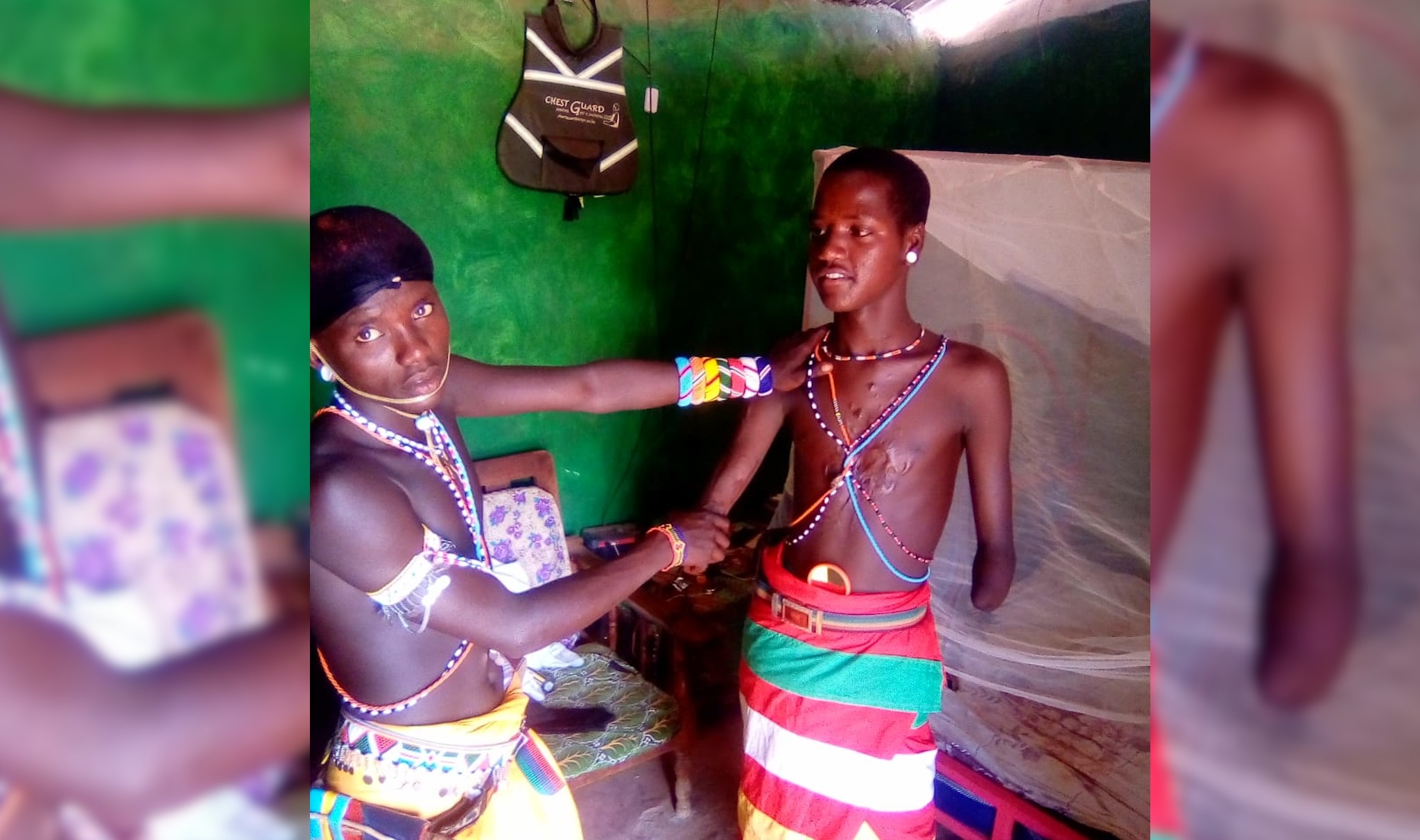A Kenyan judge recently ruled that the country’s courts have the authority to hear a compensation claim against the British army. The decision paves the way for nearly 1,500 Kenyans to sue UK troops for starting a huge fire near Mount Kenya last March.
One man was killed while trying to fight the fire on the privately-owned Lolldaiga conservancy. Another person, Murage Gitonga, developed breathing difficulties and has since died.
Britain’s Ministry of Defence (MOD) is trying to claim ‘sovereign immunity’ from this litigation in Kenya.
The court case shines a rare light on places like Lolldaiga, which is one of eight estates the MOD pays a secret and “commercially sensitive” sum of money for its troops to train on.
Many of these ranches were established in colonial times, when European settlers took over some of Kenya’s most fertile land around Laikipia County. This area in north central Kenya became dubbed ‘the White Highlands’.
Pastoralists and other indigenous communities who occupied Laikipia before colonisation, especially the Maasai, were relegated to the driest part of Laikipia or reserves in southern Kenya.
In the 1950s, an uprising by the Kikuyu Land and Freedom Army (“Mau Mau”) was brutally suppressed by British troops. Pastoralists did not recover their land with the end of colonial rule in 1963. Instead, Kenya’s first president encouraged white settlers to remain after independence.
Today, some of the descendants of those settlers, who decided to make Kenya their permanent home, still occupy vast swathes of land and often allow British troops to train there.
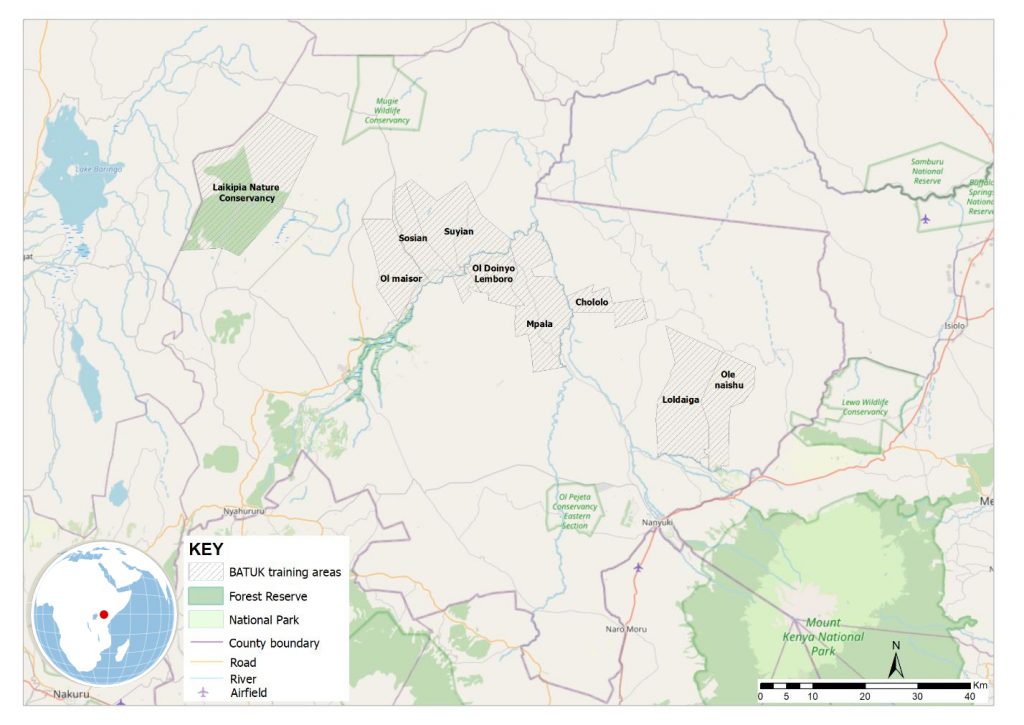
Fertile ground
Stretching from Laikipia to Samburu counties, these estates cover a wide range of climatic conditions from arid savannah to upland forest.
During the wars in Afghanistan and Iraq, the British army found Kenya’s training grounds offered great similarities in climate and terrain.
They are also hubs for wildlife conservation, making them a magnet for western tourists who want to go on safari.
Yet climate change and more frequent droughts are forcing displaced pastoralists to try to graze their animals on these valuable lands.
This inevitably leads to conflicts with ranchers. In May 2000, pastoralists drove their livestock into Lolldaiga farm. That time the government intervened and found a temporary compromise.
But since 2009 such confrontations have become more violent. The proliferation of small arms among both pastoralists and ranchers has added to the insecurity.
Armed rangers are often employed to guard against poachers. Since 1990, British troops have given extensive support to the Kenya Wildlife Service, which has a controversial shoot-kill-policy.
Laikipia’s large estate owners and the British army claim that they contribute to Kenya’s local economy by creating as many as 900 jobs.
They also provide services from education to health care. The Laikipia Wildlife Forum estimated in 2010 that the British military contributed over £17 million a year to the area.
However, the exact amount of UK taxpayer money going to the Laikipia landowners remains totally opaque. Here’s a survey of these eight estates:
1. Lolldaiga
Lolldaiga Hills is a cattle ranch and wildlife conservancy located 20km north west of Mount Kenya.
Official records show 20,000 hectares of the estate were made available for UK military exercises by its previous owner, Robert Wells. His grandfather settled the land during colonialism.
Last March, British soldiers accidentally torched nearly 50 square kilometres of the estate.
A conservancy worker, Linus Murangiri, was crushed to death by a vehicle while trying to put the fire out. He left behind a wife, Karen Gatwiri, and two young boys.
A representative for Robert Wells told Declassified: “The family of Linus Murangiri, including his parents, and his wife and their two children, were paid compensation in August 2021 equivalent to 10 years’ of Mr. Murangiri’s salary.
“This process was overseen by the Laikipia County Government labour office. Further private payments were made in addition.”
Declassified has seen documents confirming that 1.7 million Kenyan shillings was paid to Murangiri’s family in compensation for his death at work. The amount is equivalent to around £11,350.
Following the fire, Wells sold much of Lolldaiga ranch, retaining 3,500 acres for tree planting and habitat restoration. Meanwhile, almost £5 million worth of land and property has been purchased in rural England under his wife’s name.
Declassified understands that a trust – Nature Custodians Kenya – bought the majority of Lolldaiga from the Wells family, after donor funds were raised by The Nature Conservancy, a US-based nonprofit foundation.
In November 2021, Nature Custodians Kenya handed the management of Lolldaiga to Africa Nature Investors, whose directors include Michael Dyer. His grandfather came to Kenya in 1907 during the colonial period and acquired land.
2. Ole Naishu
Ole Naishu is a livestock ranch approximately 30km from Nanyuki where British troops in Kenya are headquartered.
The farm, located in an area of rolling low hills, conducts ecotourism and conservation activities. Some 12,000 hectares at Ole Naishu are available for UK troop training.
The ranch was owned for a long time by Jeremy Block, a white Kenyan coffee magnate. Block bought the ranch in 2000 and called it Ole Naisho, which is a Maasai term for honey. Previously, the property had been owned for a long time by a Dane of British origin.
Staff at Ole Naishu, who asked not to be named, told Declassified the estate was recently purchased by the family of Kenya’s current President, Uhuru Kenyatta.
However, no records indicating a change of ownership are available at the Ministry of Lands and Settlement Offices in Nanyuki.
Like Loldaiga, it is understood Africa Nature Investors are taking over the management of Ole Naishu.
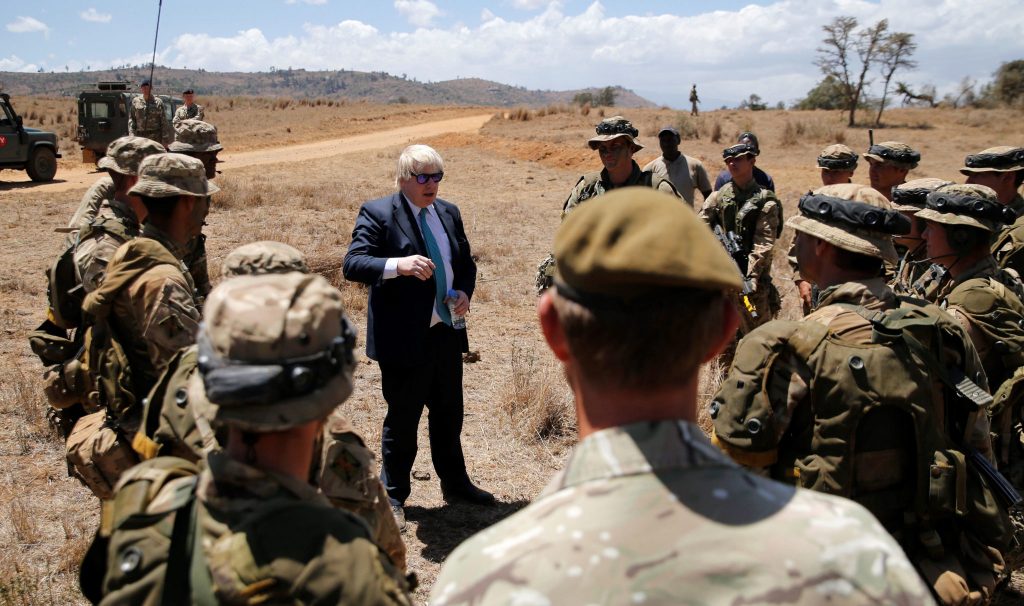
3. Mpala
Mpala ranch is a swath of savanna and woodland habitat in Laikipia, with large numbers of elephants, zebras and hippos.
It was purchased by Sam Small, a British settler, in the 1950s. He bequeathed it to his brother George who in 1989 established a wildlife foundation.
Mpala is also used as a farm for raising cattle, camels, sheep and goats. The British army is permitted to train on 4,000 hectares of the Mpala estate.
Its rugged hills intertwined with valleys with a dense canopy of acacia provide a unique environment for military exercises.
In February 2021, British troops caused a fire on the farm that damaged a 40,000 square metre area of grassland. Mpala staff, who requested anonymity, told Declassified that Britain pays an annual training fee of £1 million pounds.
The UK military also grades all roads in the ranch, constructing houses and a research centre. In addition, British troops support community health outreach programmes and provide medicines for livestock.
Mpala was asked to comment.
4. Suyian
Suyian is a ranch in north west Laikipia County named after a rare breed of African wild dog.
The current owners of Suyian are direct descendants of an English farmer, William Ernest Powys, who moved to Kenya in 1914.
British troops are allowed to train on nearly 2,000 hectares of Suyian’s land twice a year, between March to May and October to November.
The military camps are pitched high in the escarpment while the personnel conduct their military manoeuvres in deep valleys and along the Ewaso Narok river.
When asked how much the UK military pays for this access, Anne Powys from Suyian ranch told Declassified: “I’m afraid we are unable to disclose this kind of information to the public.”
5. Ol Maisor
Ol Maisor is a ranch located in Laikipia County, with space for farming, conservation and tourism.
Various species of wildlife roam the ranch including elephants, zebras and gazelles. There are 12,000 hectares available for British military exercises.
Records show UK troops sparked two fires at Ol Maisor in February and March 2021, damaging 100,000 and 160,000 square metres on each occasion.
The farm is owned and run by Martin Evans, whose family have occupied the land for three generations. Ol Maisor has been hit by local land disputes with intruders killing several staff.
Ol Maisor Farm was asked to comment.
6. Sosian
Sosian is a working beef and dairy ranch in the centre of the Laikipia plateau. It has some of the most luxurious tourist lodges in Kenya and a wide variety of wildlife species.
British troops can train on nearly 5,000 hectares of land at Sosian twice a year. The land was settled by a British general during colonial rule in 1920.
It was later taken over by Tristan Voorspuy, a former UK army officer. Voorspuy was shot dead by pastoralist herders in 2017, as part of the wider conflict over land in Laikipia County.
The ranch is currently managed by Sean Outram, whose “great grandfather was one of the first European men to explore the Masai Mara”.
Sosian was asked to comment.
7. Ol Doinyo Lemboro
Ol Doinyo Lemboro (ODL) neighbours Mpala, Sosian and Suyian ranches, forming a long circuit for British troops to move around.
There are 7,000 hectares at ODL available for UK military exercises. The terrain is rugged with valleys and dense acacia trees, providing a unique environment.
In March 2021, British soldiers caused a fire that damaged around 40,000 square metres of grassland.
The ranch is managed by Ivan Tomlinson who is of mixed African and British heritage.
8. Chololo
Chololo is a ranch located on the far eastern part of the huge Laikipia plateau. It is one of the four ranches owned by the Jessel family which is of mixed African and European heritage.
Chololo, the most famous of the family’s ranches, is owned by Sammy Jessel. In 2018, Prince William met Jessel on a visit to see British soldiers training in Kenya.
There are 6,000 hectares available for UK military exercises at Chololo, mostly on the lower part of the ranch towards the Ewaso Nyiro river, neighbouring Mpala ranch.
The proximity of the two ranches creates a corridor for soldiers to cross between.
Declassified was not able to contact ODL or Chololo for comment about how much the British army pays to use their land.

